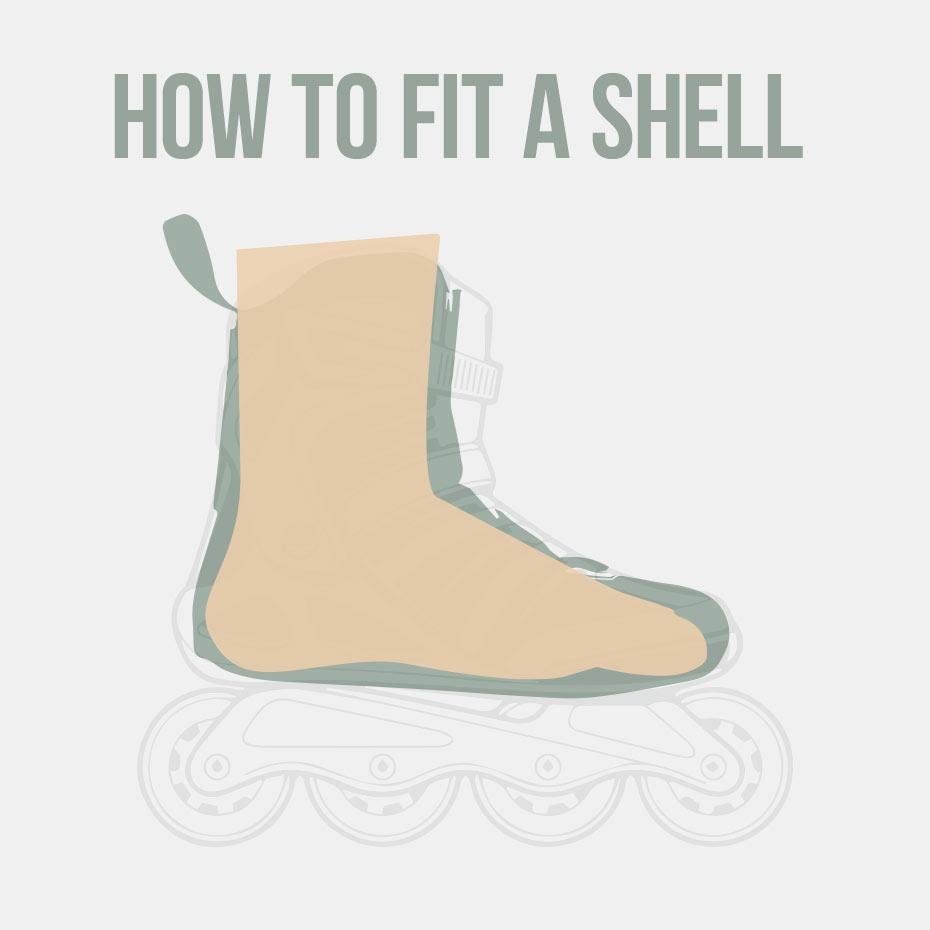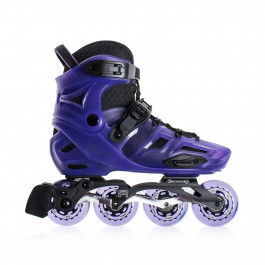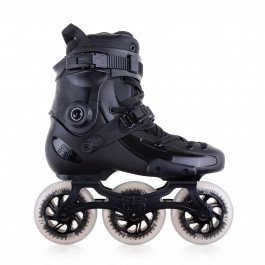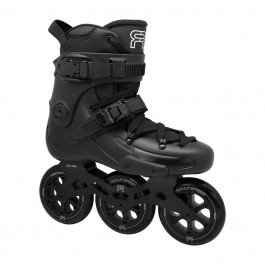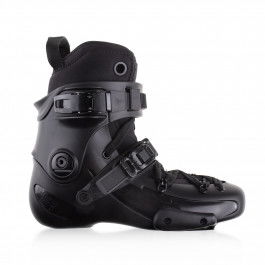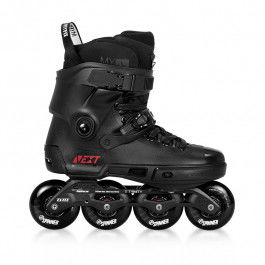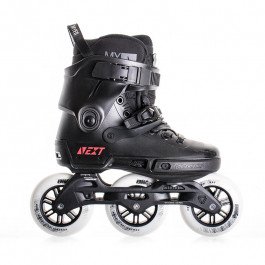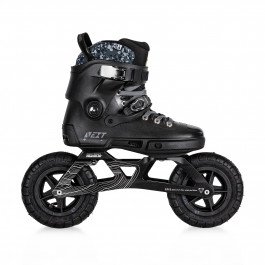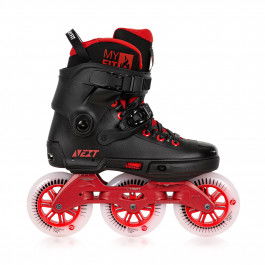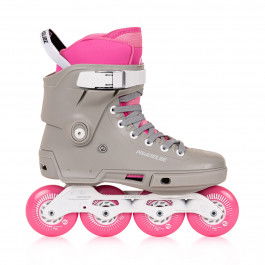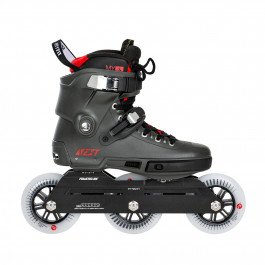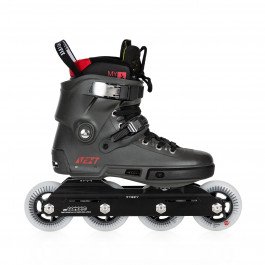Hardboot skates aren’t shoes.
Do you know the feel of opening a box of fresh skates, just waiting for you to put them on and go outside? Most of you probably do. Most likely you cannot help yourself and go skate right away.
Sometimes this very first skating experience is far from great. There’s a pressure on your feet, not enough room for toes, your ankles hurt after a while and you get abrasions. It’s easy to notice that such skates don’t really fit you well, and they may be too small. The hard shell won’t stretch out over time, no chance of that.
But you can be unfortunate enough to stump upon a different scenario — you skate for the first time and skates feel like pillows on your feet — the level of comfort is extraordinary. After regular use in the upcoming weeks, the foams of the liner compress and it becomes floppy, resulting in a very loose fit. You get heel lift, it’s harder to control the skates, skin abrasions start to pop up from your feet rubbing against inside of the liner. The skates turned out to be far too large for your size.
The goal of this piece is to help you to avoid both scenarios. To equip you in knowledge which will allow you to choose hardboot skates that will be comfortable after break-in period and won’t lose anything from performance. I am skating for 12 years now (apart from skating when I was a kid) and during that time I’ve been using numerous combinations of harboots and liners. What you’ll read here comes from my own experience acquired by skating dozens of shells with numerous liners. As this subject is deep, I’ve decided to split it to subtopics. Hope that you’ll enjoy reading!
How to fit a shell? 8 practical lessons.

Lesson 1: Individual sizes in hardboots are a big lie.
Skating companies usually inform their customers about the length of the insole, not the actual boot size. Let’s take hugely popular (and deservedly) RB 80 line skates as an example. They are available in the following EU sizes: 35, 36.5, 38, 39, 40.5, 42, 43, 44.5, 45.5, 47.
On a side note: this sizing makes a lot more sense if we take US (sizes 4-13) or UK (3-12) standard into account, where sizes change by one. When converting to EU sizing, you get half sizes.
On paper, it looks like that there are 10 different sizes of RB 80 to choose from. In reality, these correspond to only 6 sizes of the shell. The only size with individual shell is EU40.5, the rest share one shell per two sizes (i.e. EU42-43).
As you most likely figured out by now, when you buy a EU42 size skate what you really get is a boot that can fit EU43 feet, but with a bit shorter liner. Of course, it’s perfectly possible to skate like this and majority of users won’t complain. But if you want to have skates that fit best as possible, to have better control and lower weight — it’s better to look around for a different model.
I must point out that Rollerblade usually does a very good job when it comes to delivering a big variety of sizes. Twister Edge and Maxxum Edge have sizing that changes by 0.5 cm, giving 17 insole lengths and 8 different shell sizes to choose from. It was the same with now discounted Fusion line of skates. In case of RB 80 (and RB 110 3WD, based on the same boot) there are not as many sizes to choose from as this shell is not designed by Rollerblade — it’s simply a factory owned mould which Italians have upgraded and polished to create a cheaper alternative to Twister line.
It is the most common case scenario to have one shell size per two liner sizes. Manufacturers do not make individual shell sizes because cost of making injection moulds is rather big — we are talking between 30 000 – 40 000 US dollars per size
Now imagine that Rollerblade would make 17 different moulds for Twister — we are approaching a million dollars for just one boot type!
Unfortunately, skating companies most often do not share information about shell sizing. That’s why we have created reference charts for most popular freeskating models. You can find them here.
There are exceptions to the rule, though. Powerslide has ditched the illusory sizing information in favour of dual fit liners — each liner is for two feet sizes thanks to stretchy neoprene toe and corresponds to one shell.
For example, one of the Dual Fit sizes for PS Next skate is EU42-43. Below you can see a comparison of different model, Imperial — the sizes shown are EU41-42 and EU43-44. As you can see, the difference in overall boot size is pretty big:

The company called Them Skates which makes aggressive skating boots have a different approach — they offer four boots sizes: XS, S, M, L. The shell dimensions and insole length for each size are known to public — the company is playing open cards game with the customers, who usually customize their skates with different liners to find best shell/liner combo for themselves.
Lesson 2: Not all skates have the same shell sizing split.
It’s best to explain this concept using an example. Let’s say that we are looking for EU43 skates and choose between Powerslide Next and FR Skates FR1. The Next boot uses EU42-43 shell, so it should fit better and be smaller overall than FR1 which uses EU43-44.
In this particular case, it’s better to go with Next, but it isn’t always as simple as that. Below you can see a photo of my setups.
I’m EU42.5 size with feet of 277 mm length. Next, in the middle, are EU42-43 shell and are the smallest. On the left we have now discounted Powerslide Metropolis skate which also have EU42-43 shell but is a bit bigger overall than Next. On the right there are Imperials in size EU43-44, which are noticeably larger than Next but only a bit larger than Metropolis. Ironically, they also fit me better than Metropolis, thanks to narrower shell!

In theory, Next and Metropolis should be the same size. Why aren’t they? Because not all boots are made the same, using the same foot template as reference point.
Lesson 3: Measure your foot in millimetres, taking EU/UK/US sizes as more of a general guidance than anything else.
Up to this point I have been using EU sizes to talk about differences between skates because it was easier to explain the shell sizing that way.
Now I want you to remember to always check the real insole length, in millimetres, because how this length translates to a size given on a box is not set in stone and varies not only between manufacturers, but even different skates of the same manufacturer!
To use another example, lets say that we now want to get an EU42 skate. The first skates we try on are Imperials in size EU41-42. Their shell is 272 mm long, measured inside. Then we check Zoom, which also have EU41-42 shell. But they are much bigger than Imperials, with shell being 288 mm long!
OK, so maybe Rollerblade? RB 80 Pro in size EU42 (which shares the shell with EU43) have a shell which is 280 mm long, whereas Twister Edge in the same size have one 275 mm long (but at least it’s for EU42-42.5 sizes).
FR Skates FR1? The EU42 size have 280 mm shell.
To avoid any confusion, please remember that internal shell length is not the same as insole length. The liner padding takes a bit of space, as it must be thick enough to provide comfort especially around the heel and ankle area.
The example above shows that choosing a hardboot skate using the EU/UK/US size as the only point of reference is pointless, as every model available on the market is different. To choose the best skate for yourself, you must measure your feet length and use Mondo Point given by skate manufacturer in sizing table. You can find short instructions how to do it in the following article.
It’s worth to remember that measurements should be made in the evening, as feet stretch during the day due to fatigue and pressure — after you wake up and your feet are rested, they can be up to a centimetre shorter.
If you think that’s the end of the subject, you are in for a surprise. Feet length is only one of the factors that should be considered when choosing a skate and there are others that make given model being a good fit (or not) for the user.
Lesson 4: The shape matters.
People in skating social web space often say that some skates are for slim feet or for wide feet. There’s some truth to it — there are hardboots on both a wider and slimmer side.
Still, the overall width is never extreme in either of these directions. This is because companies want to make skates that will fit as many customers as possible. So in reality we have two shell width types:
- ones that are a nice tight fit for people with medium width feet and work well for those with slim feet too. People with wide feet will have issues in those, experiencing pain and pressure points.
- ones that are a bit loose, but acceptable, for people with medium width feet and a nice tight fit for people with wide feet. People with slim feet can skate these but the boots are going to be a very loose fit for them.
In turn, if your feet are of regular/medium width, you won’t have issues skating Imperials, which are one of the slimmer freeskating shells, but you can go for wider skates like FR1 or Zoom, too.
The majority of people do not have extremely wide or slim feet and companies target this group first and foremost. Below you can see a width difference of FR1 and Imperial skates. It is visible, but not worlds apart as some people tend to exaggerate:
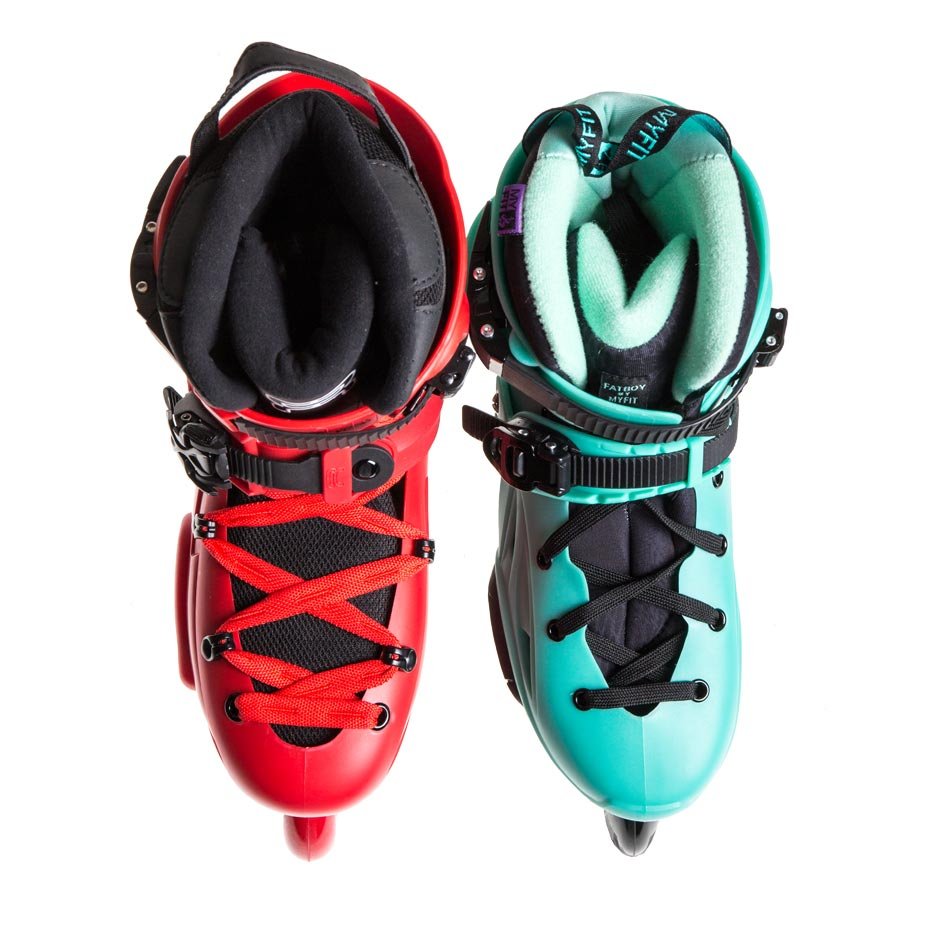
For most users, the more important factors are going to be the instep height and how their ankles are shaped.
The instep height is closely related to how well the skate will keep your foot in place. I have a very low instep and in most skates I have a minor heel lift that can’t be eliminated with lacing and buckles alone. I have 277 mm long feet and even in skates that favour me in terms of shell sizing, the heel lift still happens.
The only exception I’ve encountered thus far are Powerslide Next skates — I can skate them stock, the shell, liner and insole, without any modifications. In fact, they fit me so well that I’ve replaced buckles on them with Velcro straps. But in other skates it’s as follows:
Imperial — I use thick liner which is laced from bottom to the top, have a stiff tongue and a thicker rubber sole. Moreover, I’ve made a 2.5 mm thick rubber foam insert that goes in the shell, underneath the liner. My heel is locked down in the liner thanks to the lacing and stiff tongue and thanks to thicker layer of material underneath, the shell holds it down efficiently, eliminating the heel lift. Imperials are the biggest shell out of all skates I own (288 mm internal length, my own measurement) and stock skates were far too loose for me, whereas I couldn’t fit in to smaller shell. Below you can see a photo of the liner and the insert which rests underneath:
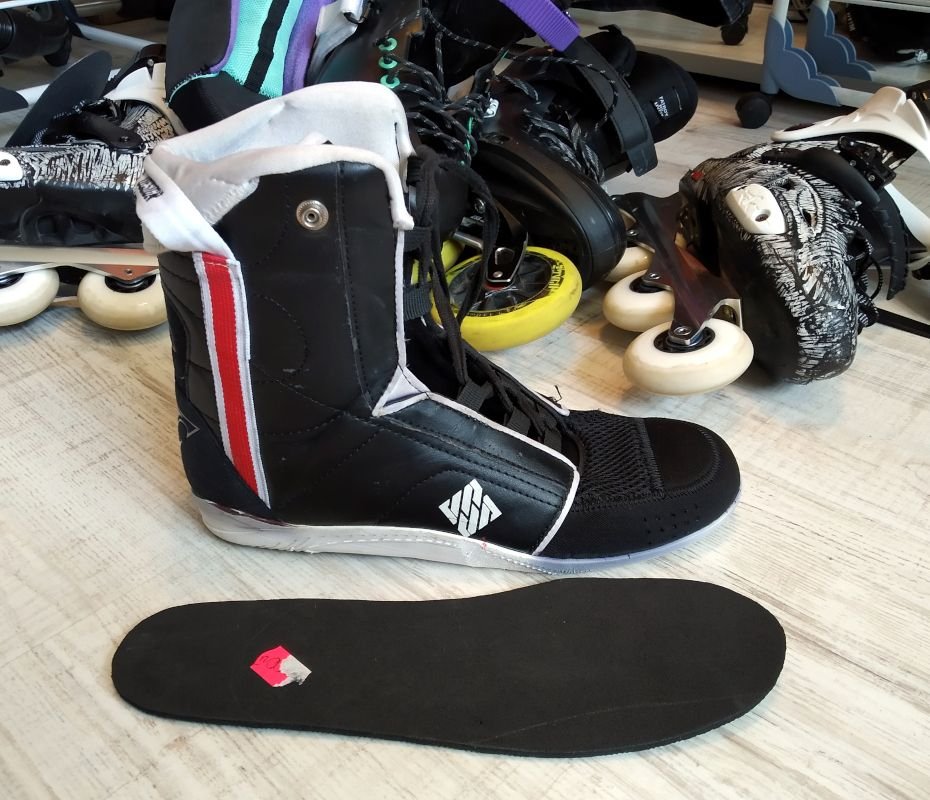
Metropolis — the shell is shorter than Imperial one, but its overall volume is bigger, as it’s wider and have higher instep area. Here, what I did in Imperial was not enough to eliminate the heel lift, so I’ve added a wedge-shaped shock absorber underneath the liner, which works well. Photo below — please note that the insert in front comes with the skate in stock configuration.
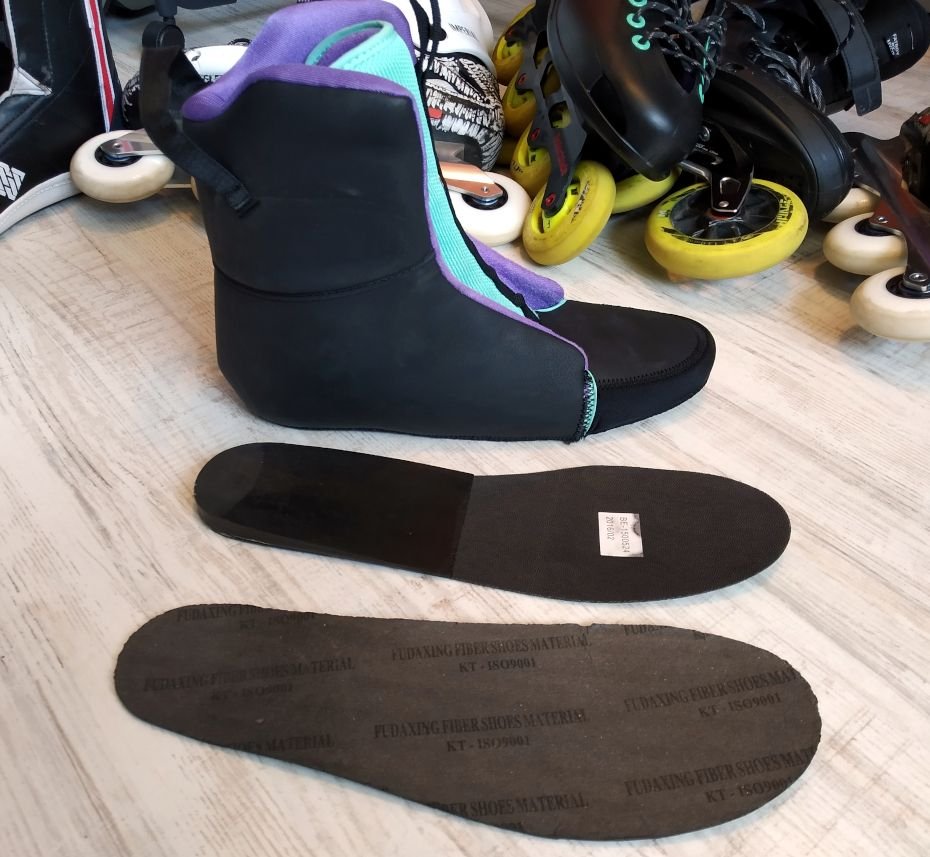
Fusion — I couldn’t skate with a stock liner because my ankles are positioned a bit lower than usually. Moreover, it was very thin in that area, which resulted in pain. I’ve replaced it with a thicker liner which not only gave the skate more padding but also pushed the shell in cuff area a bit apart, as it was flexible enough. Over the years I’ve skated Fusions with four different types of liners, including super thick Salomon STi liners. I’ve always raised the heel position a bit more, with dedicated liner (Rollerblade Blank) or using self-made inserts. It was nowhere near as extreme as in case of Metropolis, though. Overall, I rate the fit of Fusions as second only to Next, when using a thick liner. I don’t have any setup based on that boot any more, so no photo, sorry!
The only skate I’d rate as a total failure in terms of fit was Seba FR (now FR Skates FR). The shell is too open cut for me and with my low instep, lacing was not enough to hold my feet down. Even when trying different liners and additional inserts and shock absorbers, I had a heel lift (with raised liner, the liner has been moving with the foot, simply). In the end, I gave up on this skate, deeming them to be incompatible with my anatomy.
Now let’s talk about ankles.
The biggest issues I had with ankles were, ironically, in skates I’ve spent the most time skating over the years — Rollerblade Fusion. Of course, I’m talking about stock setup. My low instep is one matter, but my ankles are also placed lower than on average for adult male. For example, I cannot wear low cut leather shoes without gel pads underneath my heel — the edge of the shoe under ankle rubs it, cutting my skin.
Rollerblade tries to make their skates very anatomically correct — but they target average person. Thus, the shell is shaped to make a room for ankles, but this area is positioned too high for me in Fusion boot (and current Twister Edge). I have pressure points with shell pushing against my ankles from underneath.
But thicker liner and raising the heel a bit did the trick. To this day I value these skates highly in terms of fit.
I’m covering all of that to make one thing clear — before giving up on skates, there are numerous means to try making them work for you. You just need to tinker a bit.
You can turn a not so comfortable skates into good fitting ones at relatively low cost. If your issues are opposite of mine, i.e. you have very high instep and the shell presses against your foot too much from the top, you can try using a thinner insole or even removing a shock absorber if the bottom of the shell is (relatively) flat. Next are an example of such skate — if you remove the shock absorber, you can skate them, but you may want to put a thin insert made out of something hard underneath the liner to smooth out the foot resting surface:

Finally, you can try a liner with thinner tongue. For those who feel brave — you can even cut the shell more open, FR Skates style, but remember that it’s an one way ticket.
Lesson 5. Downsizing
Sometimes when you try the skates on, one shell size is nearly good, but could use some more space, whereas the one size up feels way too big.
You can of course try to buy a different skate, with shell that fits you better. But if you want to have a fit which is as snug as possible or you really want to have this particular skate model, you can try to downsize — to put it simply, trying to fit in a smaller shell.
It usually takes replacing the liner with a slimmer one to achieve that. Below you can see a picture of stock Seba E3 skates liner in size EU42 next to thinner MyFit 2nd Skin liner for sizes EU42-43. As you can see, they are very close in length. Moreover, it is possible to detach the “X” piece from MyFit liner to allow pushing the heel to the back a bit:

Downsizing done right will result in a skate fitting you so well that it feels almost like one piece boot with integrated padding in terms of control and feel of the skate. This is why many experienced skaters try to downsize. Below you can see a picture of Seba E3 with shell for EU41-42 sizes with MyFit liner in EU42-43 dual size.
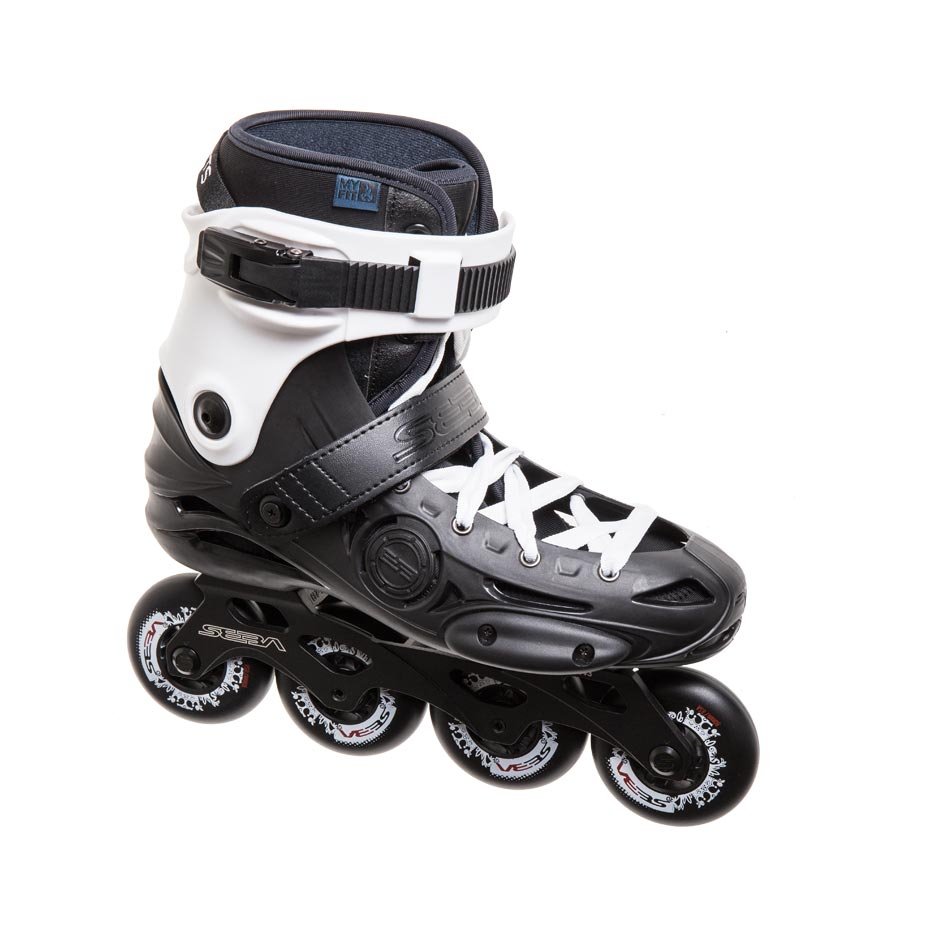
It’s worth to mention that most of the skate liners have thin, stretchy neoprene in toe area, so when designing thinner liners, companies must remove material from elsewhere, especially the heel and Achilles tendon area. This allows for pushing the foot back a bit in relation to the shell, making more room for toes. Thinner liners usually use more rigid foams, so in effect you are trading some comfort for increased control.
Before you even consider the downsizing, you must know if the whole endeavour with swapping the liners is worthwhile. It’s best to take out the stock liners and try how the shell alone fits your feet — to see if there is some space around the foot and no pressure points, especially in the toe area. If you see that there’s not enough room, look for a different skate, to put it simply.
Downsizing is easier with skates that have a wider toe area (so-called toe box). The aggressive skates in particular have more of a semi-circular shape of toe box when looking from above, which gives you more room. However, in case of freeskates, some models have more of a parabolic shape of this area, meaning that sometimes small toe gets in the way of fitting in to a smaller shell. What to do then? You must cut the toe off.
It's a joke, of course — don’t rush to the kitchen in search of a knife. What you can do is try to heat-mould the shell with a heat gun and push out the shell a bit. Ski shops quite often have tools to do this professionally. Remember that you won’t gain more than 2-3 mm in given area and it’s impossible to “stretch out” a whole shell.
If you need to move your toes a bit to the back, you can also try adding a wedge-shaped shock absorber under the liner. It will place your foot at an angle, making it possible to back it a bit in the shell. This causes the skate to lose some support in the cuff area (as cuff edge is lower in relation to ankle). Some skates which have cuff canting system line Next or FR line (not FRX) allow you to compensate by adjusting the cuff position to be higher.
From my experience, the most widely recommended solution which is to remove the insole, doesn’t work at all. Moreover, it can make matters worse, as you are loosing support underneath the foot arch which causes the foot to stretch and elongate more while skating.
Lesson 6. Lace your skates.
Aggressive skaters most often put care in to lacing their skates properly and to have their feet firmly secured in the boots. Not surprising, given that most of aggressive skates lack 45 degree strap to secure the heel. Among freeskaters, there’s a very visible trend of not caring about the lacing, or removing the laces entirely.
In my opinion, it is simply being sloppy. Skates have lacing for a reason and it plays an important part in holding the feet in place. Fastening the buckle tightly and skipping proper lacing makes the boot holding your feet in just one place instead of along most of the foot’s length. Skates may feel too big, you can get abrasions because foot moves in the liner and liners themselves will wear and get floppy, even torn, much quicker. The impaired control over the skates is another issue.
Personally, I stick with waxed laces. They do their job so good that I’ve replaced 45 degree buckles with Velcros in two pairs of my skates and during the times I’ve skated Fusions, I wasn’t using even that, as lacing alone was enough to secure my foot in place.
To sum it up — the boot won’t function as intended and fit you well if you won’t lace it in a proper way! Buy yourself a good pair of laces.
Lesson 7. Socks matter.
If you want to skate anything other than rec softboots, then similarly to other sports i.e. skiing, you need proper socks. They cannot be your regular, every day, thin socks and shouldn’t be even a bit loose.
Why? Because many issues with abrasions are caused by low quality, loose socks and people tend to blame them on skates. You need a relatively thick, tightly knitted socks that wrap around the foot firmly. I have several pairs made by Powerslide (including GAWDS brand) but I’ve found a good and cheaper alternative in the form of one of sports retail chain socks dedicated for skiing. All work well and I haven’t been dealing with abrasions for years now.
Lesson 8 and final: it doesn’t matter what other people skate.
Sometimes I see groups of skaters, newcomers to the sport, all wearing the same skate model on their feet. It is almost impossible that all four or five people who walked into a shop and bought skates will have the same feet shape. Thus, in these groups it is to be expected that at least on person will struggle with poorly fitting boots. The instinct of following the herd works against you when it comes to purchasing skates. After all, when you are buying yourself new skates, you are doing that to use them and enjoy skating, not to look at them and cheering that your whole pack of friends or family have the same ones on their feet!
Every person has different insight on what is important when it comes to fit. Some people don’t mind skates which are soft as pillows, but many others prefer something stiffer and more responsive. Putting comfort above everything else is not bad approach if you want to skate just to chill, but not everyone wants to skate just to chill. Some people want to go fast, do slides, jumps etc.
Everyone defines what is comfortable or not a bit differently too. Some people don’t mind a bit of a pressure as long as it doesn’t cause noticeable pain and doesn’t ruin feet skin, others have lower pain threshold and won’t be able to skate if the boots don’t fit them perfectly.
Each one of us is too different for one solution being good for everyone.
To end this…
It is worth to try skates on before purchase, really. I realize that shops, let alone those carrying a broad selection of skates, are not around every corner and you are reading this piece on a website of skateshop which operates predominantly in Internet space (if you ever visit Poland, I encourage you to drop in to one of shops in Katowice, Gdansk or Warsaw, though).
So, what can you do when buying skates over the Internet?
- First: measure your feet
- Second: check what’s insole size is closest to your foot length and if info on shell sizing is available – check that too
- Third: if you are aware of any fit issues you have (i.e. very wide feet, super low instep, extra large ankle bones) contact a shop asking for advice, giving as many details as possible
- Fourth: after receiving the skates, do not rush out to skate with them immediately after. Wear the skates a bit at your house, take your time to lace and buckle them properly. If you feel that there are any painful pressure points, the skates are too narrow, too small or way too wide — you’ll be able to return them within 14 days if the purchase has been made in EU. Mind you, you must cover the cost of sending the skates back, and they cannot have any signs of wear.
Of course, it would be nice if you would buy the skates from Bladeville, but realistically, for someone on the other side of the world reading this, especially if they live in a country with high import taxes and customs fees, this may not be an option. So, know that most countries outside EU have similar returns laws, but some do not impose a responsibility of accepting returns on shops.
However, it is also worth to check shop returns policy, as even if right to return product after purchase via Internet is not mandated by law, many shops accept them in some forms (if not cash, they can offer exchange to gift cards or replacement with different products).
Wherever you buy, make a smart choice about your purchases - support skateshops that give back to our sport and help it moving forward. And don't feed the e-commerce bald dragon sitting on a pile of gold.
Good luck shopping and finding a pair of skates that fit your feet as good as Next fit mine. Remember, hardboots will last you years, so it’s good to put some extra care in to choosing them!


